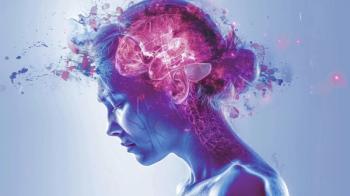
- Psychiatric Times Vol 18 No 8
- Volume 18
- Issue 8
Research Presented at Annual Meeting
Were you unable to attend the annual meeting of the American Psychiatric Association in May? Read the first part in a series of summaries of important new research presented there.
(This is the first installment in a series of articles discussing new research presented at the 2001 American Psychiatric Association Annual Meeting -- Ed.)
Effect of Mirtazapine on Ejaculation: A Comparative Study With Paroxetine
Various levels of sexual dysfunction are often associated with depression and with the use of antidepressant medication. A study was conducted to compare the influence of mirtazapine (Remeron) versus paroxetine (Paxil) in delaying ejaculation in patients with primary premature ejaculation. Twenty-four mentally, physically and sexually healthy men with lifelong rapid ejaculation, along with their female partners, were selected to participate. Using a stopwatch at home, baseline measurements of men's intra-vaginal ejaculation latency time (IELT) were determined after one month. Men with an IELT of less than one minute were randomized in a double-blind manner into two groups. Over a period of five weeks, 20 mg/day paroxetine (n=12) was prescribed for the first group. The second group (n=12) took 30 mg/day of mirtazapine. Both groups took half the dosage of their medications in the first week.
The effects on ejaculation differed significantly (p<0.01) between the two groups of men, with mirtazapine demonstrating no effect. The absence of effects of mirtazapine on ejaculation time confirmed the low rate of sexual side effects reported with this drug. This is probably related to its pronounced antagonistic activity at the 5-HT2c receptor. Conversely, the study also confirmed previous findings showing that paroxetine produces a serious delay of ejaculation. This study was underwritten by an educational grant from Organon (Waldinger MD et al., NR 715).
Weight Gain With Clozapine in Patients With Childhood Psychotic Disorders
It is fairly common knowledge that weight gain presents a considerable health risk to children for whom clozapine (Clozaril) and other atypical antipsychotics have been prescribed. What is not clear is the relationship between the use of clozapine alone or its combination with other psychotropic drugs. Researchers from the National Institutes of Health, led by Peter A. Gochman, M.A., studied weight gain in 22 patients with childhood-onset psychoses treated with clozapine doses ranging from 162.5 mg/day to 675 mg/day.
The mean weight gain for participating patients at follow-up was 41.7 lb; the mean increase in body mass index (BMI) was 4.8 kg/m3. Study results demonstrated that variables including initial weight, BMI, treatment response, dose, or such laboratory values as glucose levels, cholesterol and triglycerides did not appear to be associated with weight gain while taking clozapine.
One variable that did present a difference was the cotreatment of children with a ß-blocker for tachycardia or attention-deficit/hyperactivity disorder; these children did not have weight gain at follow-up. The BMI changes in these patients were significantly different from the rest of the group (0.7 kg/m2 versus 5.6 kg/m2, p=0.03). These findings were noted despite a lack of differences on any laboratory value, initial heart rate, increase in heart rate with clozapine or any other studied measures between this group and the rest of the patients participating in this study.
Gochman and colleagues concluded that, in order to develop a greater understanding of these differences in weight gain, further study and evaluation are warranted (Gochman PA et al., NR 29).
Treatment Response to Risperidone by African-Americans and Caucasian-Americans With Schizophrenia
There is not much information on the treatment of nonwhite people with schizophrenia. While available data suggest there are comparable response rates among African-Americans and Caucasian-Americans, clinical studies of schizophrenia show that African-American patients typically receive higher doses of antipsychotic medications than Caucasian-Americans and appear to be more vulnerable to developing tardive dyskinesia. Additionally, studies with other medications, including tricyclic antidepressants, lithium and antihypertensives, have demonstrated that African-Americans may respond differently to a given dose of medication than Caucasian-Americans. Some of the differences in drug response may be attributed to differences in drug metabolism between the ethnic groups.
Researchers from Janssen Pharmaceutica and Howard University examined these differences between ethnic groups in post-hoc analyses of data on subsets of African-Americans and Caucasian-Americans with schizophrenia from three North American clinical studies: an eight-week, double-blind comparison of risperidone (Risperdal) and placebo; an eight-week, double-blind comparison of risperidone and olanzapine (Zyprexa); and a one-year, double-blind comparison of risperidone and haloperidol (Haldol).
Three measures were used -- Positive and Negative Syndrome Scale (PANSS) total, Brief Psychiatric Rating Scale (BPRS) and the thought disturbance item. In the risperidone versus placebo trial, a total of 95 African-Americans and 371 Caucasian-Americans with schizophrenia were enrolled. In both ethnic groups, the risperidone response rate was significantly higher than the placebo response rate and was similar between the two ethnic groups. Similar results also were found in the risperidone versus olanzapine trial. A total of 115 African-Americans and 197 Caucasian-Americans were enrolled, and the two ethnic groups had the same response rates to both treatments. In the risperidone versus haloperidol trial, risperidone was associated with greater efficacy than haloperidol in both ethnic groups. In fact, African-Americans who received risperidone showed greater improvement on some subscales of the PANSS than Caucasian-Americans. Additional exploratory analyses revealed that African-Americans on risperidone had a lower relapse rate than Caucasian-Americans. A total of 130 African-Americans and 174 Caucasian-Americans were enrolled in this trial.
Researchers concluded that African-Americans respond favorably to risperidone treatment and that, in some treatment domains, these subjects may have a better response to risperidone than Caucasian-Americans. Overall, however, African-American subjects responded equally well to risperidone and olanzapine. Studies are needed to determine if there are ethnic differences in metabolism of antipsychotics (Martinez RA et al., NR 270).
Atypical Antipsychotics for Severe Geriatric Anxiety: A Novel Indication
The treatment of severe geriatric anxiety with benzodiazepines has often proven to be ineffective and potentially dangerous. In an effort to find alternative medications, a group of Spanish researchers led by Luis Aguera-Ortiz, M.D., conducted a study to examine the efficacy and safety of risperidone and olanzapine for elderly patients.
Twenty outpatients (
60 years) diagnosed with severe anxiety (Hamilton Rating Scale for Anxiety [HAM-A] scores >25) alone or associated with conditions other than psychosis, bipolar disorder or dementia (Mini-Mental State Exam [MMSE] scores >24) received low doses of either atypical antipsychotic.
The patients were mostly women (85%) with a mean age of 75.6 years, 40% of whom had generalized anxiety disorder. Incidence of other disorders was: adjustment disorder, 35%; major depression, 15%; and dysthymia, 10%. Olanzapine (mean dose=5 mg/day [2.5 mg/day to 7.5 mg/day]) was administered to 70% of the patients, while 30% of the patients took risperidone (mean dose=0.79 mg/day [0.25 mg/day to 1.5 mg/day]). Global results, anxiety, depression and sleep changes were measured independently by Clinical Global Impression (CGI) scales. Independent of sex, diagnosis, type of drug or physical illness, improvements of greater than five points (much or very much improved) were noted after six weeks on each of the CGI scales: global, 78%; anxiety, 79%; sleep, 13%; and mood, 78%.
Except for four patients whose treatment was discontinued, side effects were either absent or generally mild. Researchers concluded that for elderly patients suffering from severe geriatric anxiety, atypical antipsychotics may be an acceptable, safe and highly effective alternative treatment (Aguera-Ortiz L et al., NR 753).
Weight Changes in Children and Adolescents on Atypical Antipsychotics
Two Pennsylvania doctors examined weight gain in adolescents taking atypical antipsychotics to determine weight changes and compliance with earlier reported patterns of pharmacodynamic characteristics. Twenty-six children (mean age=11.92 years, SD=2.61) participated in this trial. Weight and height measurements were recorded at the beginning of the study and monthly for six consecutive months. Final changes in weight and BMI were calculated for children given risperidone (n=14), quetiapine (Seroquel) (n=8) and olanzapine (n=4); data were analyzed to determine differences.
Statistically significant differences were recorded between the groups in final weight change, controlling for age, sex, initial weight, duration of treatment and placement on a weight reduction program. Children taking olanzapine demonstrated the highest mean weight change (+6.53 kg); children receiving quetiapine recorded the lowest gain (-0.21 kg).
The researchers concluded that weight gain remains a side effect of atypical antipsychotic treatment for adolescents and that patterns of weight gain tend to correlate with previously described differential affinity for histamine H1 receptors in adult males (Ibikunle JO and Bonsall EK, NR 28).
Literature Review of Hyperglycemia and Diabetic Ketoacidosis With Atypical Neuroleptics
An association between secondary diabetes with atypical neuroleptics, specifically olanzapine and clozapine, has been reported in a small number of cases. New-onset diabetes after antipsychotic treatment initiation is startling, since the use of atypical antipsychotics has become the first line of treatment for schizophrenia.
Twenty-six case reports were analyzed, of which 14 reports of diabetes, diabetic ketoacidosis (DKA) or worsening diabetic blood glucose control after initiation of olanzapine were found. Five (36%) of these patients developed DKA. Seventy-nine percent of the patients were compelled to discontinue their antipsychotic. Eighteen percent of the patients who discontinued their medications required long-term insulin; 18% required long-term oral hyperglycemic treatment.
In addition, there were 12 case reports of diabetes, DKA or worsening glucose control after the initiation of clozapine. Half of these patients developed DKA, and 42% required discontinuation of their antipsychotic. Of those who discontinued treatment, one patient required long-term insulin, and two required long-term oral hyperglycemic treatment.
Review of the literature confirmed three additional reports of associated increases in blood glucose with thioridazine (Mellaril), loxapine (Loxitane) and quetiapine, respectively. Blood glucose levels normalized after medication was discontinued in each of these cases. No reports of an association between risperidone and diabetes were discovered.
Serious consequences may evolve from an association between secondary diabetes and olanzapine and clozapine. Because of these case reports, clinicians should be cautious when starting patients on these neuroleptics. Further research is warranted to confirm these findings and to establish guidelines for physicians (Schwarz ME and Aladjem AD, NR 509).
Sexual Dysfunction in Patients With Schizophrenia on Atypical Antipsychotics
Antipsychotic medication is known to affect patients' sexuality. What is not clear is whether there is a difference between typical antipsychotics (i.e., haloperidol and fluphenazine [Prolixin]) and atypical antipsychotics (i.e., clozapine, risperidone, olanzapine and quetiapine) and their propensity to induce sexual dysfunction. Researchers at the department of psychiatry of State University of New York at Buffalo conducted a study to compare the sexual functioning of patients taking typical and atypical antipsychotics.
The Changes in Sexual Functioning Questionnaire-I (CSFQ-I), a standardized, semi-structured questionnaire, was administered to male and female outpatients with schizophrenia who had been taking either an atypical or typical antipsychotic for at least three months. The CSFQ-I assessed five dimensions of antipsychotic-induced sexual dysfunction: sexual desire, arousal, pleasure, orgasm and overall sexual functioning. Excluded from the study were patients suffering from medical conditions or those taking medications (including antidepressants)/substances documented to affect sexual functioning.
Sixty percent of the patients taking typical antipsychotics reported significant overall sexual dysfunction, compared to 23.5% of the patients taking atypical antipsychotics. In addition, sexual desire was significantly decreased for men taking typical antipsychotics, compared to men taking atypical antipsychotics (p
0.05).
In conclusion, researchers reported that sexual dysfunction is a significant side effect for patients taking typical antipsychotics as compared to those taking atypical antipsychotics (Valenti AM et al., NR 69).
Risperidone Versus Placebo for Severe Behavioral Disturbances in Children With Suboptimal IQ
Parents, teachers and psychiatrists will be pleased to know that risperidone has been shown to effectively and safely improve the symptoms of conduct disorder and other disruptive behavior disorders in children with sub-average IQ. A randomized, double-blind study compared risperidone and placebo in the treatment of children with severe conduct disorder, oppositional defiant disorder or disruptive behavior disorder not otherwise specified (diagnosed using DSM-IVcriteria) and with sub-average IQ (35-84).
After one week of receiving placebo, 110 children -- aged 5 to 12 years -- were treated with placebo or risperidone each morning for six weeks. Doses could be adjusted within a range of 0.02 mg/kg/day to 0.06 mg/kg/day. The main efficacy instrument was the Conduct Problem subscale of the Nisonger Child Behavior Rating Form (N-CBRF), from which changes from baseline were compared. Other efficacy variables included subscales of the N-CBRF, the Aberrant Behavior Checklist (ABC), the Behavior Problems Inventory (BPI) and the CGI scale.
Statistically significant decreases of six to seven points favoring risperidone were observed as early as week 1 and continued throughout the trial. At endpoint, the risperidone group showed an average decrease on the N-CBRF of 15.9 points from a mean baseline score of 33.43, which was statistically significant compared to the placebo group. Additionally, significant differences favoring risperidone were found with the other scales. No serious adverse events were reported in the risperidone group, and one serious adverse event was reported in the placebo group.
Researchers concluded that risperidone effectively and safely improved the symptoms of these children. They also concluded that risperidone in small daily doses of 0.02 mg/kg/day to 0.06 mg/kg/day is effective and well-tolerated for the treatment of severe behavioral problems in children with sub-average IQ (Findling RL et al., NR 737).
Articles in this issue
over 24 years ago
Addiction Resource Guide: An Internet Publishing Adventureover 24 years ago
CMS Proposes to Change Rule of Restraintsover 24 years ago
My Office Doorover 24 years ago
Psychiatric Abandonment: Pitfalls and Preventionover 24 years ago
How Can a Psychiatrist Make a Fair Agreement With a Patient?over 24 years ago
Merging Administrative and Academic Careers in Psychiatryover 24 years ago
Disulfiram -- One Tool of Recoveryover 24 years ago
Neglect of Privacy and Continuity Under Managed Careover 24 years ago
Combining Family Practice and Psychiatry Resident TrainingNewsletter
Receive trusted psychiatric news, expert analysis, and clinical insights — subscribe today to support your practice and your patients.














